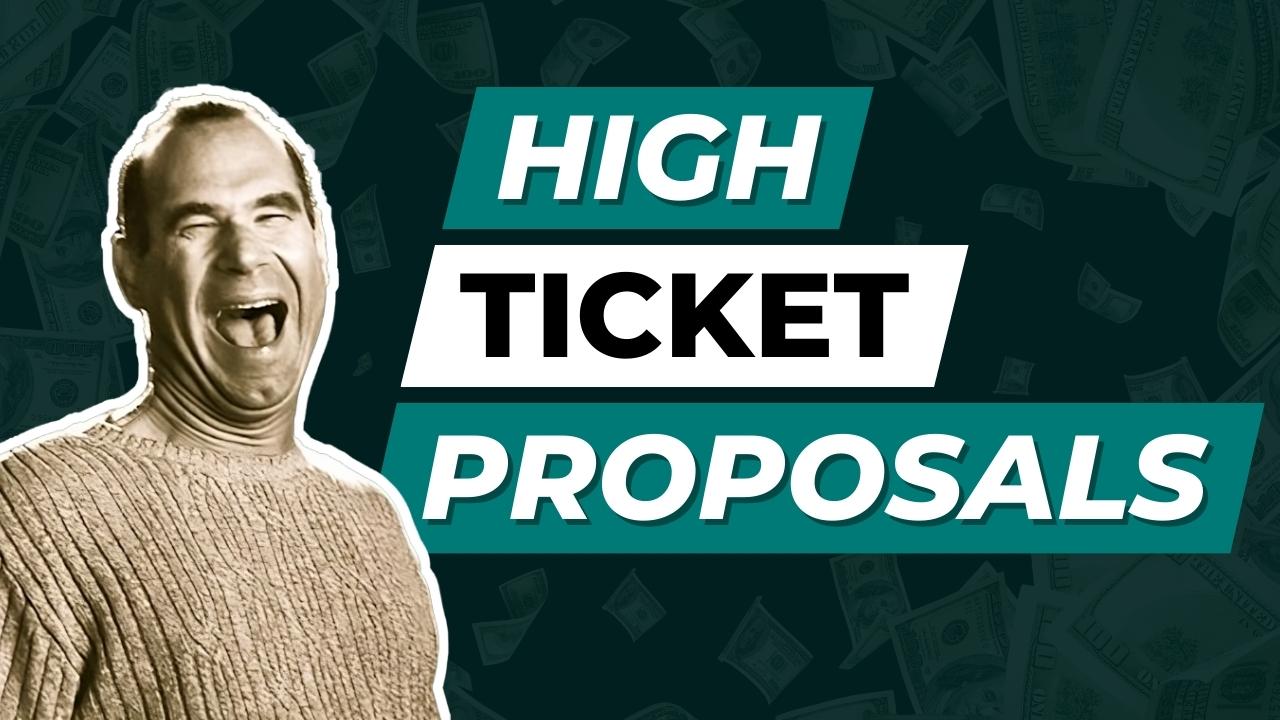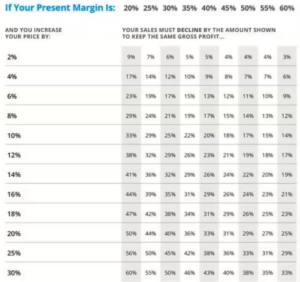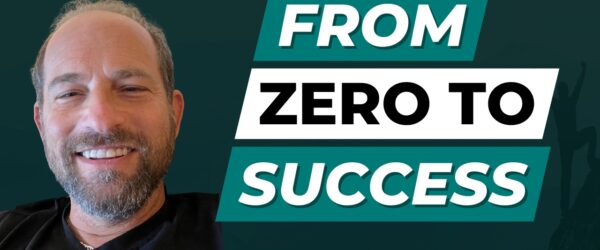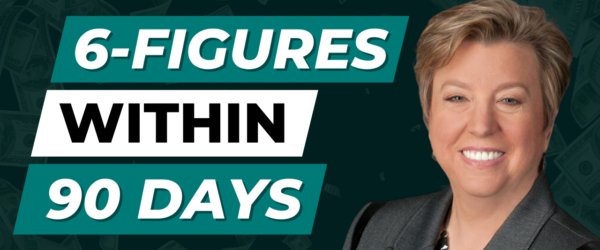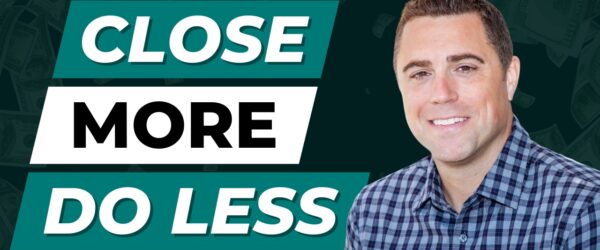During this insightful session, we're diving deep into the realm of high ticket proposals. Dave Albano, our esteemed guest, is here to equip you with a powerful six-step framework that holds the key to instantly building authority and wowing prospects in under an hour. With his extensive background in social psychology and decades of experience, Dave has crafted a proposal honed to perfection.
Throughout his presentation, he teaches how to apply this framework and customize it to your own offers, ensuring relevance and impact. Prepare to gain control of the entire sales process while making irresistible offers that result in an impressive 80% or more closure rate. Get ready for the magical six-word close that effortlessly transforms complete strangers into your most valuable high ticket customers. Stay tuned as we unveil the secrets behind this remarkable strategy. Now, let's dive in and learn how to close more deals and command higher prices!
Why High Ticket & Why Your Need To Raise Your Prices
Selling high ticket items holds incredible potential, and let's explore why. Imagine this: when selling a $29 product, you need to sell 1,000 units to reach $29,000 in revenue. However, if you sell a $10,000 item, you only need to sell 10 to achieve $100,000. The psychology behind sales applies to both high ticket and low ticket items. Therefore, it's just as easy to sell high ticket as it is to sell low ticket.
Overcoming the fear of raising prices is crucial, and a mere 10% price increase can have significant impacts on your business. By understanding your profit margin, increasing prices by 10% would allow your sales to drop by 25% and still maintain the same earnings. Imagine the power of increasing prices by 20% with a high profit margin, where you could maintain revenue even with a quarter of your current sales. These numbers demonstrate the potency of raising prices and the attractiveness of the high ticket market.
Dave’s 6-Step High Ticket Framework
Dave Albano's 6-step high ticket framework is the heart of his powerful sales strategy. Each step is designed to lead prospects towards closing deals successfully.
The steps include:
- acknowledging the obvious
- presenting your process
- stating your authority
- displaying your results
- offering a solution
- asking for the business.
To demonstrate this framework, Dave walks the GoMobile Community through a live and interactive proposal presentation. This presentation, color-coded in black and green, is a presentation within a presentation, adding an inception-like element to the process. The proposal template is easily customized with the prospect's name and logo, maintaining a professional and branded touch throughout.
Step 1: Acknowledge the Obvious
Step 1 of Dave’s high ticket framework is all about acknowledging the obvious, and it begins with reiterating the problems discussed during the discovery call. By listing these problems in bullet point form on a slide, Dave shows that he was truly attentive and understands the prospect's pain points. This unique approach sets him apart from others in the industry, instantly grabbing the prospect's attention.
Dave shares actual slides from a client proposal, showcasing how he addressed specific issues, such as the need for a cohesive digital marketing strategy, a struggling podcast, an underperforming email list, and the challenges with their social media manager. This step serves as proof that Dave listened carefully and is ready to provide tailored solutions.
Step 2: Announce Your Process
Step 2 of Dave Albano's high ticket framework is all about announcing your process, which forms the core of your presentation. Dave encourages customization by replacing the slides with your own methodology. He highlights the importance of naming your process or framework, as it adds a proprietary touch to your offering. Dave shares glimpses of his own methodology, including the client adventure score, the customer value journey, and the focus on the return path in funnel strategies. He emphasizes the need to address any questions the prospect may have and reiterates that these slides should be replaced with your own relevant content to showcase your unique approach.
The Return Path
In Step 2 of the high ticket framework, Dave also introduces the concept of the return path, which involves bringing prospects back into the funnel after they have left. He explains that the return path is facilitated through email marketing, retargeting, and exit pops, emphasizing the importance of guiding prospects along their journey. Dave leverages his partnership with digital marketer and references their program, the Invisible Selling Machine, which focused on email marketing.
By including a photo of himself with industry leader Ryan Deiss, Dave showcases credibility and establishes a casual, friendly connection. He strategically inserts testimonials related to email marketing, demonstrating the effectiveness of his processes and systems. This step is all about announcing your process and methodology, allowing you to showcase your unique strategies, whether it's SEO, PPC, or your secret sauce.
Step 3: State Your Authority
In Step 3 of the high ticket framework, Dave emphasizes the importance of stating your authority to showcase your expertise and build credibility. He advises waiting until around 50 slides into the presentation before talking about yourself, as the focus should primarily be on the prospect and their needs. Dave shares various ways to demonstrate authority, such as highlighting the services you offer, mentioning certifications and industry awards, and showcasing partnerships with reputable organizations.
He encourages the use of borrowed credibility by partnering with industry leaders or leveraging testimonials and endorsements from trusted sources. Dave emphasizes the power of social proof, including screenshots of positive comments or testimonials, and utilizing video testimonials for third-party endorsements. By effectively stating your authority, you can position yourself as a trusted and knowledgeable expert in your field.
Step 4: Display Your Results
Step 4 of the high ticket framework focuses on displaying your results through the use of case studies. Dave emphasizes the value of collecting case studies to showcase real-world examples of success. He encourages the audience to freely use these techniques in their own businesses, whether they work together or not, as it adds tremendous value. Dave advises starting with case studies, even if you're just starting out, by offering your services for free in exchange for testimonials and glowing case studies.
He highlights the importance of simplifying technical details and educating prospects before presenting the case studies to ensure they understand and feel comfortable. Dave uses click-baity headlines and walks prospects through the breakdown of each case study, demonstrating impressive revenue boosts, successful product launches, and list building strategies. By strategically layering credibility and proof, Dave effectively builds trust and anticipation for the upcoming offer.
Step 5: Offer the Solution
In Step 5 of the high ticket framework, Dave shifts gears and offers the solution to the prospect. After establishing his authority and building credibility through testimonials and proof, Dave takes control of the conversation. He introduces his three-month fractional CMO trial and explains how he addresses the risk factor by offering a trial instead of a guarantee. Dave emphasizes the high-level goals he aims to achieve for the clients, such as building their brand, increasing business valuation, and implementing effective programs. He then delves into the features and benefits of his offer, highlighting the one-on-one custom strategy sessions, unlimited email and online access, accountability, and automation of lead generation.
Dave strategically uses the concept of value stacking, showcasing the various deliverables and the extensive cost savings clients would enjoy by working with him. He concludes this step by demonstrating the immense value of the bundled all-in-one AI-enabled marketing software and automation, emphasizing the significant monthly cost savings it brings compared to using multiple other tools.
Revealing The Investment
In the fifth step after offering the solution, Dave reveals the investment to the prospect. He highlights the value of his time by emphasizing the regular cost of his services and then showcases the generous amount of time they will receive in the three-month trial, equating it to a value of $36,000.
Dave strategically refers to the prospect's payment as an investment rather than a fee, creating a positive mindset. He utilizes price juxtaposition to demonstrate the immense value of his offer, initially presenting a monthly price tag of $17,000 but then offering a discounted rate of $7,500, resulting in almost $10,000 in monthly savings. Dave explains the trial period and the option for month-to-month payments, emphasizing the win-win approach and the importance of delivering value to retain the client. The presentation concludes with a powerful testimonial that reinforces the effectiveness of Dave's strategies and the significant impact they have had on the client's business.
Step 6: Ask For The Business
In the final step of the high ticket framework, Dave emphasizes the importance of asking for the business. He simplifies the closing process by using a six-word close: "Would you like to work together?" After posing this question, he remains silent, allowing the prospect to respond.
In most cases, the prospect will express interest and inquire about the next steps. However, if they hesitate or decline, Dave suggests downselling by offering an alternative or exploring if they know anyone else who might benefit from the proposal. This approach transforms the presentation into a potential referral generator, ensuring that even if the prospect doesn't proceed, opportunities for future business or referrals may arise.
Conclusion
In Dave Albano's "Using High Ticket Proposals: How To Close More Deals and Command Higher Prices" happy hour session, he shared valuable insights and a practical six-step framework for closing sales effectively. The key takeaways include the importance of controlling the sales process, utilizing value stacking and price juxtaposition techniques, and leveraging Zoom presentations with decision-makers present.
The session emphasized the significance of templatizing proposals while personalizing key sections. Additionally, Dave revealed the power of a concise six-word close, followed by silence to allow prospects to respond. By delivering on his promise, Dave provided actionable strategies that can be implemented immediately to enhance sales outcomes. Now we call you to action and encourage you to take this knowledge and information to build your own high ticket proposal template deck to sell your prospects.

